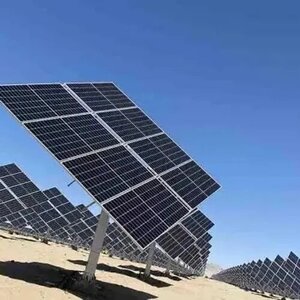Blog Information
- Posted By : roberto bueno
- Posted On : May 08, 2025
- Views : 10
- Category : General
- Description : Incorporating a dual axis solar tracker into a solar energy system offers substantial benefits, particularly when it comes to increasing the overall efficiency and energy output. By adjusting both vertically and horizontally, these trackers ensure that solar panels are always facing the sun, maximizing sunlight capture and reducing the payback period for the system. While they may come with a higher upfront cost, the long-term advantages of improved energy production make them an excellent investment for anyone serious about optimizing their solar power generation.
Overview
Solar energy has quickly become one of the most effective and sustainable sources of power. However, to truly optimize the potential of solar panels, efficient tracking systems are essential. This is where solar trackers come into play. A dual axis solar tracker takes solar panel efficiency to the next level by adjusting the panel’s position along two axes to follow the sun’s path throughout the day. This results in more energy being harvested compared to traditional stationary solar panels. In this article, we will explore the benefits and features of solar trackers, with a particular focus on dual axis solar trackers, and how they can make a significant impact on solar power generation.
The Basics of Solar Trackers
Solar trackers are devices used to orient solar panels towards the sun in order to maximize exposure to sunlight throughout the day. They come in various configurations, but the most advanced type is the dual axis solar tracker, which offers movement on both the horizontal and vertical axes. Unlike single-axis trackers, which only move in one direction, dual-axis trackers adjust both vertically and horizontally to keep solar panels perfectly aligned with the sun’s rays.
How Do Dual Axis Solar Trackers Work?
The dual axis solar tracker utilizes sensors and motors to track the sun’s movement across the sky. By moving along two axes—one that adjusts the tilt (vertical axis) and one that adjusts the rotation (horizontal axis)—this tracker system allows the solar panels to follow the sun’s position more accurately throughout the day. This means that, regardless of the time or season, the solar panels remain optimally positioned to capture maximum sunlight.
One of the main advantages of dual axis solar tracker over fixed or single-axis trackers is the increased energy output. Dual axis trackers can increase energy production by up to 40% compared to stationary panels. This makes them an ideal choice for those looking to maximize their solar energy generation and achieve higher returns on their investment.
Benefits of Dual Axis Solar Trackers
The implementation of dual axis solar trackers offers several notable benefits. The most significant advantage is the increased efficiency and energy output. By constantly adjusting the panel’s position throughout the day, these trackers ensure that the solar panels are always facing the sun, resulting in more sunlight captured and converted into electricity.
Additionally, dual axis solar trackers are particularly effective in areas with inconsistent sunlight or locations where the angle of the sun changes significantly throughout the year. By optimizing the angle and orientation, these trackers ensure that solar panels receive the best possible exposure, even during the winter months when the sun’s position is lower in the sky.
Another key benefit of dual axis trackers is their ability to improve the overall performance of a solar system. This is particularly useful for large-scale solar installations, such as solar farms, where maximizing energy output is crucial. The ability to extract more energy from the same surface area of solar panels leads to higher overall system efficiency, reducing the payback period for the installation.
The Cost vs. Benefit of Dual Axis Solar Trackers
While dual axis solar trackers offer increased efficiency, they come at a higher initial cost compared to traditional stationary panels or single-axis trackers. The additional expense comes from the advanced technology, sensors, and motors required to operate the dual axis system. However, the long-term benefits of increased energy production often outweigh the initial investment.
Over time, the enhanced energy yield from dual axis trackers can result in significant savings on electricity bills, making them a worthwhile investment for many solar energy users. Furthermore, the growing demand for renewable energy solutions has led to a reduction in the cost of solar tracker systems, making them more accessible to residential, commercial, and industrial customers alike.
Conclusion
Incorporating a dual axis solar tracker into a solar energy system offers substantial benefits, particularly when it comes to increasing the overall efficiency and energy output. By adjusting both vertically and horizontally, these trackers ensure that solar panels are always facing the sun, maximizing sunlight capture and reducing the payback period for the system. While they may come with a higher upfront cost, the long-term advantages of improved energy production make them an excellent investment for anyone serious about optimizing their solar power generation.
